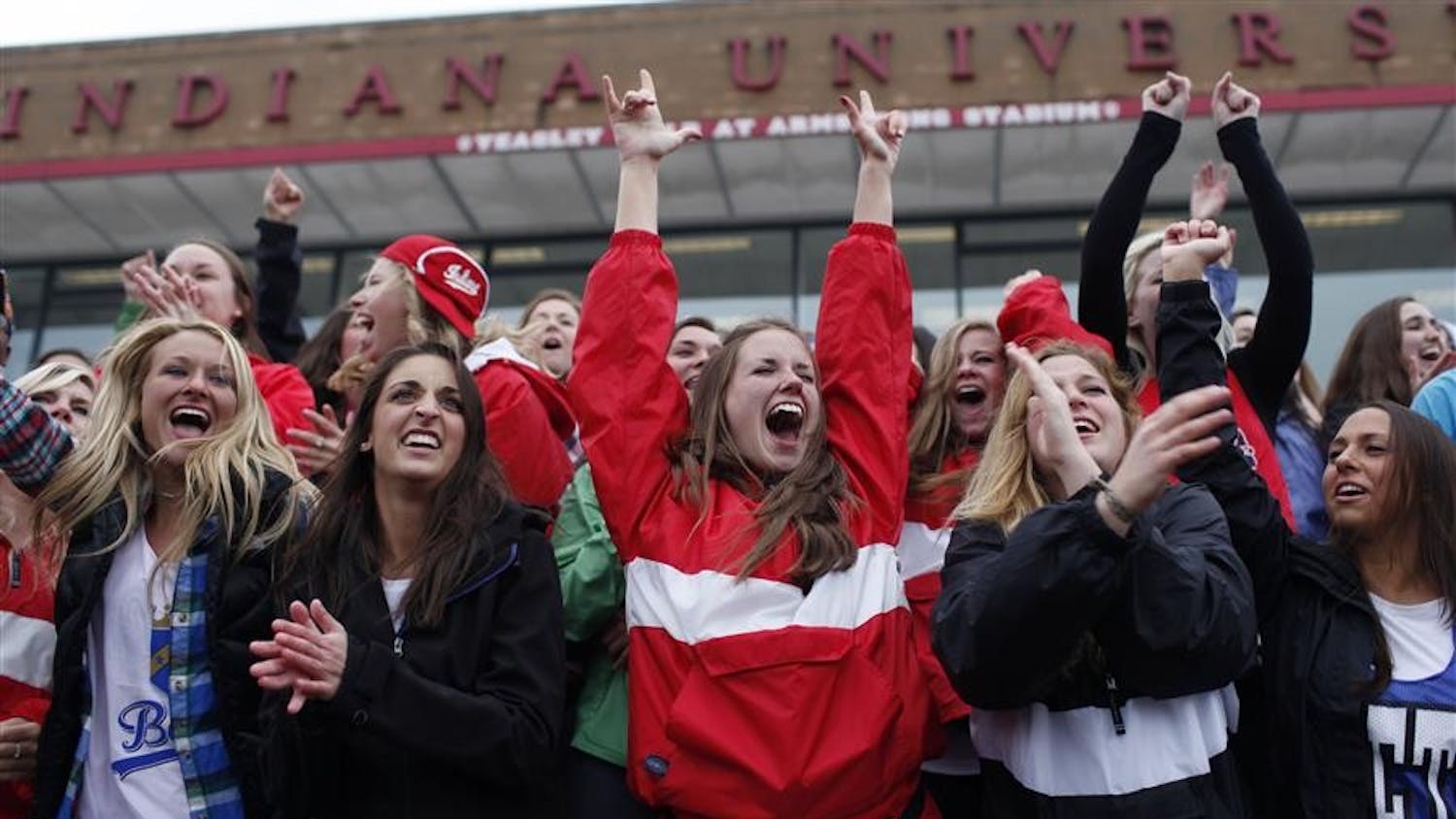With help from Black Key Bulls rider Jordan Bailey, the IDS defines some of the most important race day terms.
Spring Series Events
Four events — Qualifications, Individual Team Trials, Miss ’N Out and Team Pursuit — test individual and team strength. They precede race day on weekends in April.
Rookie Week
Ten-day crash course in bike and track basics taught by the Riders Council for all riders who have never raced Little 500 before
Rookie Hours
Rookies must attend track times for at least 75 percent of their availability until the Wednesday before the race.
Fifth Rider
A rider who has trained with the team but does make the final four card for the race
“Mount your Schwinn Bicycles”
The historic words that mark the start of every Little 500. Often given by a dignitary of the race, the phrase is likened to the Indianapolis 500 command of “Gentleman, start your engines.”
Pole Position
The team that qualifies first for the race. This team is given the green jersey to wear on race day. The reason that they call it “pole position” or “being on top of the pole” is again another Indy 500 term. At the Indianapolis Motor Speedway on the front straightaway, there is gigantic pole that has numbers one through 33, then next to those are digital numbers with the corresponding car numbers. To start the race, the numbers are set accordingly to how teams qualified for the race, but then once the race starts, the numbers change based on the current leaders for a given lap.
Draft
The rider who sets the pace out front does approximately 33 percent more work than the rider behind him because he is cutting the wind. Therefore, every rider behind the leader is doing significantly less work than the leader, so long as they are a half an inch to six inches behind the rear wheel, or in the “draft” of the person in front of him. This is why during the course of the race, the front five or six teams in the pack will exchange pulls every half lap to full lap.
The Peloton
Also known as the pack, field or bunch is the large main group of riders during the race. Riders who are in the peloton have an easier time riding because they are within the draft of the riders in front of them.
Getting a Gap
When a rider wants to come in for an exchange, he will usually try to get a gap on the field. In other words, the rider will try to put distance between himself and the lead rider in the peloton. Teams will do this because usually an exchange will lose a team anywhere from a half to a full straightaway of distance compared to those teams behind them. So ideally, when a rider gets a gap on the field, completes the exchange, the next rider on the bike is up to speed and will either be at the front of the pack or just behind it.
Borg-Warner Trophy
A replica trophy of the actual Indy 500 trophy that is presented to the winners of each Little 500. While the winners do not get to keep the Borg-Warner Trophy, their team name as well as their winning race time is engraved on the trophy, along with all of the other teams that have won the race.
Fly Lap
Is a term used in qualifications for the lap prior to the start of a team’s run. The first rider during qualifications is given a fly lap in order to get up to speed.
Face Lap
Leisure rides around campus, especially down Kirkwood Avenue, the goal of which are not to train but to boost a team’s confidence and public image.
— Stephanie Kuzydym
Race day dictionary
Get stories like this in your inbox
Subscribe




